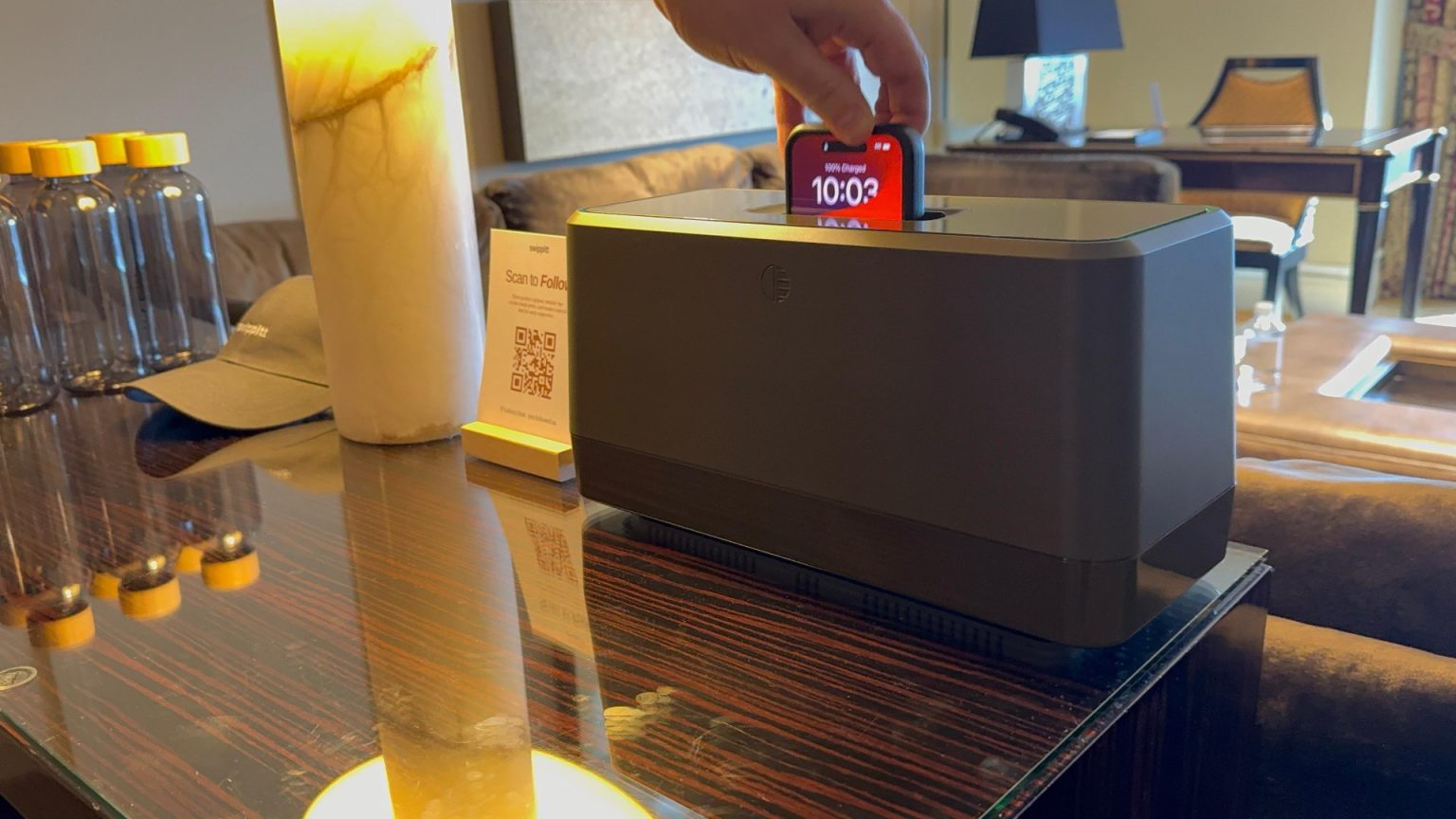Swippitt, an Irish startup, has introduced a revolutionary approach to mobile phone battery management with its Instant Power System (IPS). This innovative system eliminates the anxiety of a low battery by enabling users to instantly swap out depleted batteries for fully charged ones, effectively doubling the phone’s lifespan in mere seconds. Unlike traditional charging methods, which require waiting for the battery to replenish, Swippitt offers a seamless and immediate power boost. The system consists of a specialized hub and a complementary phone case. The hub, resembling a toaster in design, stores five fully charged battery packs. The Swippitt Link phone case, specifically designed for compatibility with the hub, houses an integrated battery. When a user docks their phone in the hub, the system automatically exchanges the depleted battery in the case with a fresh one, providing an instant surge of power.
The Swippitt IPS distinguishes itself from conventional power banks and wireless chargers by eliminating waiting time and the clutter of cables. This on-the-go power solution is particularly beneficial for users constantly on the move or in situations where a low battery can be disruptive. Initially, the system will be available for iPhone 14, 15, and 16 models, with plans to expand compatibility to Android devices, including Samsung Galaxy phones, in 2025. The company showcased the technology at the Consumer Electronics Show (CES) in Las Vegas, generating significant interest. Swippitt aims to revolutionize battery management by offering a user-friendly, efficient, and sustainable solution to a common mobile phone frustration.
Padraic Connolly, CEO of Swippitt, emphasizes the system’s user-friendliness, speed, and sustainability, highlighting its potential to transform how users manage their phone’s power. He believes the IPS will significantly improve user experience by removing the inconvenience and anxiety associated with low battery levels. The Swippitt app complements the hardware, providing advanced features such as battery statistics and family safety options, further enhancing the user experience. The company positions the IPS as a pioneering solution, paving the way for a smarter and more convenient approach to mobile phone power management.
However, the innovative technology comes at a premium price. The Swippitt Hub is priced at $450 (£364), and each compatible phone case costs $120 (£97). This pricing strategy positions the product in the premium segment of the mobile accessories market, targeting users willing to invest in convenience and cutting-edge technology. While the initial cost might be a barrier for some, the elimination of downtime and the seamless power-swapping capability offer a unique value proposition.
The degradation of battery performance over time is a well-known phenomenon in electronic devices. Most modern gadgets rely on lithium-ion batteries, which gradually lose their ability to hold a charge as they undergo repeated charge-discharge cycles. This decline in capacity necessitates more frequent charging as the battery’s ability to store energy diminishes. The chemical processes within the battery contribute to this degradation. During charging, lithium ions move from the cathode to the anode, and the reverse occurs during discharge. This continuous movement gradually wears down the anode’s structure, reducing its effectiveness.
Furthermore, a salt-like buildup accumulates on the cathode during charging, further hindering the battery’s ability to accept a full charge. This combined effect of anode degradation and cathode buildup results in a noticeable reduction in battery capacity over time. It’s estimated that after 500 to 1,000 full charge-discharge cycles, a lithium-ion battery’s maximum capacity can decrease by approximately 20%. Swippitt’s IPS addresses this inherent limitation of lithium-ion batteries by providing a readily available source of fully charged replacement batteries, effectively circumventing the issue of diminishing capacity and extending the usable lifespan of the phone’s power source.




